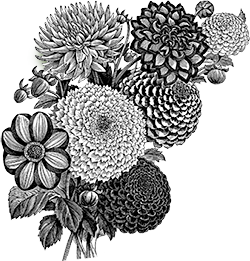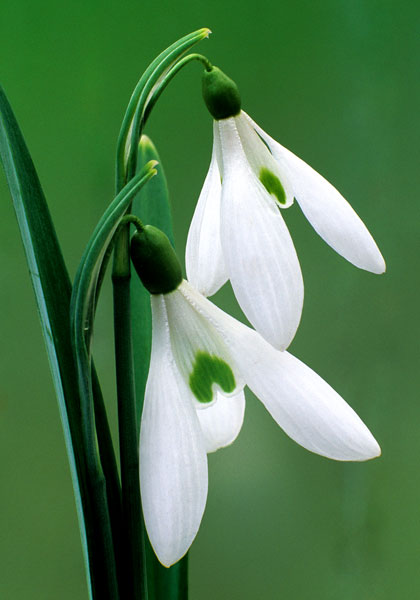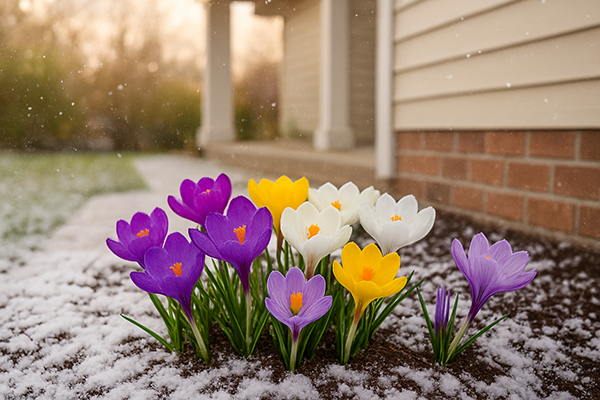|
“Everybody needs beauty as well as bread, places to play in and pray in, where nature may heal and give strength to body and soul alike.”
– John Muir, 1838-1914, American naturalist, author, and advocate for preserving wilderness
|
|
“I love bulbs,” Bellamy writes in her new book, “I like them for their optimism, their resilience, and for their transient beauty. I like the forms and colours of their flowers at every stage of their opening and, whenever I see a bulb in full flower, I am sure, in that moment, that it is my favorite. I am not alone in this. From commonsensical Margery Fish, who naturalized Galanthus in ‘The Ditch” in her garden at East Lambrook Manor in Somerset, to Anna Pavord with her passion for the tulip that drove men mad, to artist Cedric Morries, who deliberately crossed and raised thousands of iris seedlings in search of particular markings, and the gardeners who cultivate and conserve rare and historic tulip varieties in serried and glorious ranks at Hortus Bulborum in the Netherlands for us to enjoy, there are many who share my enthusiasm.”
Bellamy’s book is a visual delight as it is full of photographs of bulbs in glorious English garden beds and naturalized in meadows and woodlands. It is organized by bloom time, beginning in late winter & early spring and ending in autumn and early winter, and describes stand-out varieties for each season, based on conversations with a wide range of garden designers and writers. It’s a treat to watch the seasons change as one reads through the chapters and to recognize old friends and be introduced to new possibilities. We're proud to be one of the four sources she recommends for American gardeners and appreciate her praise for historic as well as modern selections.
Long-time gardeners will not be surprised that Galanthus or snowdrops begin the parade in late winter. So many different named varieties exist that we offer a rotating selection, and this year we’re happy to make available the rare Atkinsii (1869), Woronow’s snowdrop (1935), and G. elwesii (1875), which Bellamy praises as “one of the best” for naturalizing, being “easy to grow and swift to establish.” Scilla and crocus follow, including ‘Prins Claus’ (“an easy ticket to vibrant early colour, as well as being a boon for early flying pollinators”) and C. tommasinianus (which has self-sowed and multiplied in the Front Meadow at Great Dixter, she reports for more than 100 years.)
Next up are Iris reticulata, dwarf or reticulated iris, including ‘Katharine Hodgkin’, then come the daffodils. She highlights a number of heirloom varieties, including” ‘Bath’s Flame’ for flowers that “hold their color well;” ‘White Lady’ as “a firmly established favourite;” naturalizers ‘Tenby’ and N. poeticus recurvus; “beguiling” ‘Lucifer’, and “lovely” ‘Thalia’. Later in the spring come
Anemone blanda, “a great choice for naturalized plantings,” Leucojum aestivum ‘Gravetye Giant,” fragrant hyacinths, and of course the many forms of tulips. We’ll explore those in more detail, and continue through the seasons, in our September issue, so stay tuned!
|
|
You’ll notice in many of our rarest tulip descriptions “From the Hortus" and may have wondered what that means. We’ve partnered with this Dutch organization for years and are so glad for their work. The Hortus Bulborum began in 1924 through the efforts of a young schoolmaster Pieter Boschman who, noticing how many historic varieties were becoming scarce, started building a collection of them in his own garden. After a few years as he was running out of space a childhood friend, interested in his efforts, provided him with growing space on his own bulb farm.
Through the efforts of many volunteers over the years, the Hortus has grown into an internationally known treasure, preserving varieties that would otherwise have been lost entirely. When their collection permits, we’ve been fortunate to have them share some of their surplus with us to provide to similarly-passionate American gardeners. We can only get a limited quantity, and availability varies from year to year depending on their harvest, so they often sell out long before our other varieties. We wanted to let our loyal newsletter subscribers have an early reminder to check our offerings for this year now - they’re beautiful, rare and difficult to find elsewhere.
|
|
Sometimes a particular bulb tempts you but is just outside your garden zone. It’s fine to take a chance with it anyway, but if it’s a more expensive proposition it’s handy to know ahead of time if there’s a special spot in your yard where it will have the best chance of success. A recent article by Erica Browne-Grivas in Horticulture presented an interesting idea: using early spring bulbs like crocus to explore the relative conditions of different locations. Crocus are small and low-cost, so it’s easy to tuck them in a number of spots without great expense, and because they bloom in early spring they’ll give you results before you get too busy with spring garden projects. You’ll see which locations are warmer than others by noticing (and perhaps marking for future reference) where they come into bloom first. Often this is near to a building, but you may be surprised to find other sheltered spots. You’ll get the most accurate results, of course, by using the same variety and planting them all at the same time this fall – and then check the results of your experiment next spring!
|
























